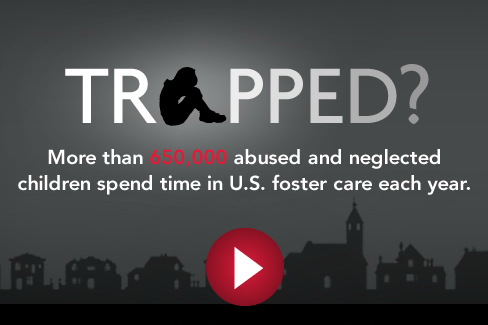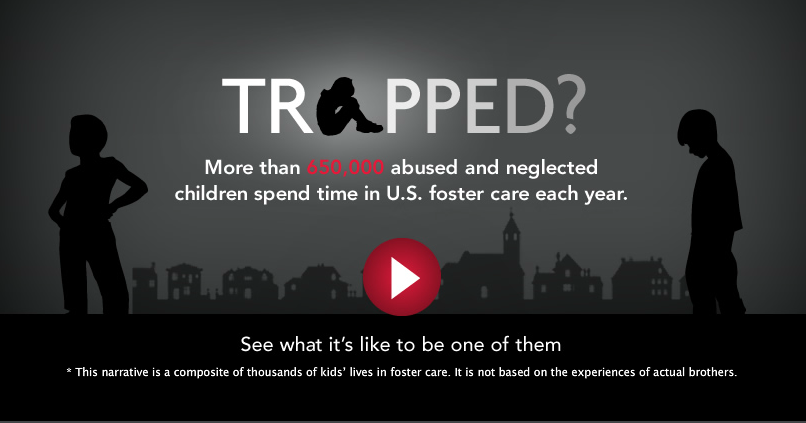Each year, more than half a million children come into contact with the foster care system in the United States. Of those, 80 percent suffer from severe emotional problems, according to a report by the American Academy of Pediatrics. Less than 50 percent receive their high school diploma, and far fewer go into any type of post-secondary education.
Those are some of the statistics, but what’s it’s like to walk in their shoes? What’s it like to face the tough challenges and choices these young men and women deal with on a daily basis?
A recently launched Facebook app aims to answer those questions by offering an interactive, social experience that should help raise awareness about the challenges and outcomes of the system.
“Trapped: Fighting the Odds of U.S. Foster Care” allows users to track two fictitious brothers as they make their way through the child welfare system and mature into adulthood, both with extremely different outcomes.
Through the lives of “Jason” and “Jeff,” Children’s Rights, the New York-based non-profit that developed the application, hopes to broaden the public’s understanding of what goes on in a system largely shielded by confidentiality concerns.
“We occasionally read in the press about tragic child deaths or other problems in the child welfare system, but rarely are the public informed on the system-wide issues,” said Ira Lustbader, associate director of Children’s Rights. “’Trapped’ is our initiative to expand public awareness on the issues effecting kids in foster care, and it’s a very exciting concept.”
A typical foster kid is bounced between six to 10 homes, sometimes within a single year, before finding long-term placement, Lustbader said. For those that age out of the system and never find a permanent home – nearly 30,000 youth in 2009 – future outlooks are particularly dim.
“The prospects for kids who age out of the system are bleak,” Lustbader said. “Only 2.5 percent graduate a four-year college, as many as 31 percent spend time homeless and as many as 75 percent of boys spend time in jail.”
These facts are mirrored through the tale of “Jeff,” separated from his brother “Jason” shortly after entering the system.
“Jason” finds his way to a loving and supporting home, ultimately going on to college and landing a successful job. “Jeff,” on the other hand, is bounced between homes for years, eventually aging out of the system. Unable to find work and without any family or other support, he finds himself homeless and without a dime to his name.
The narrative is fictional, but it mirrors a swath of data about outcomes for some foster youth.
Standards and results vary by state. Between 2004-2008, more than half of the children in foster care lived in just nine states – California, Illinois, Florida, Indiana, New York., Michigan, Texas, Ohio, and Pennsylvania – according to a 2010 report by the Children’s Defense Fund.
At least 25 states failed to meet federal standards for protecting kids in the foster care system, according to FY 2010 data from the Department of Health and Human Services Adoption and Foster Care Analysis and Reporting System.
“These are unacceptable outcomes from a system that uses tax-payer dollars,” Lustbader said. “The more people know about this, the more noise we make about these problems, [the more likely it is] we can hold the system accountable.”
Children’s Rights is a national advocacy group that has worked to bring change to struggling child welfare systems in more than a dozen states. The non-profit currently has class-action lawsuits active in three states related to the child welfare reform.

